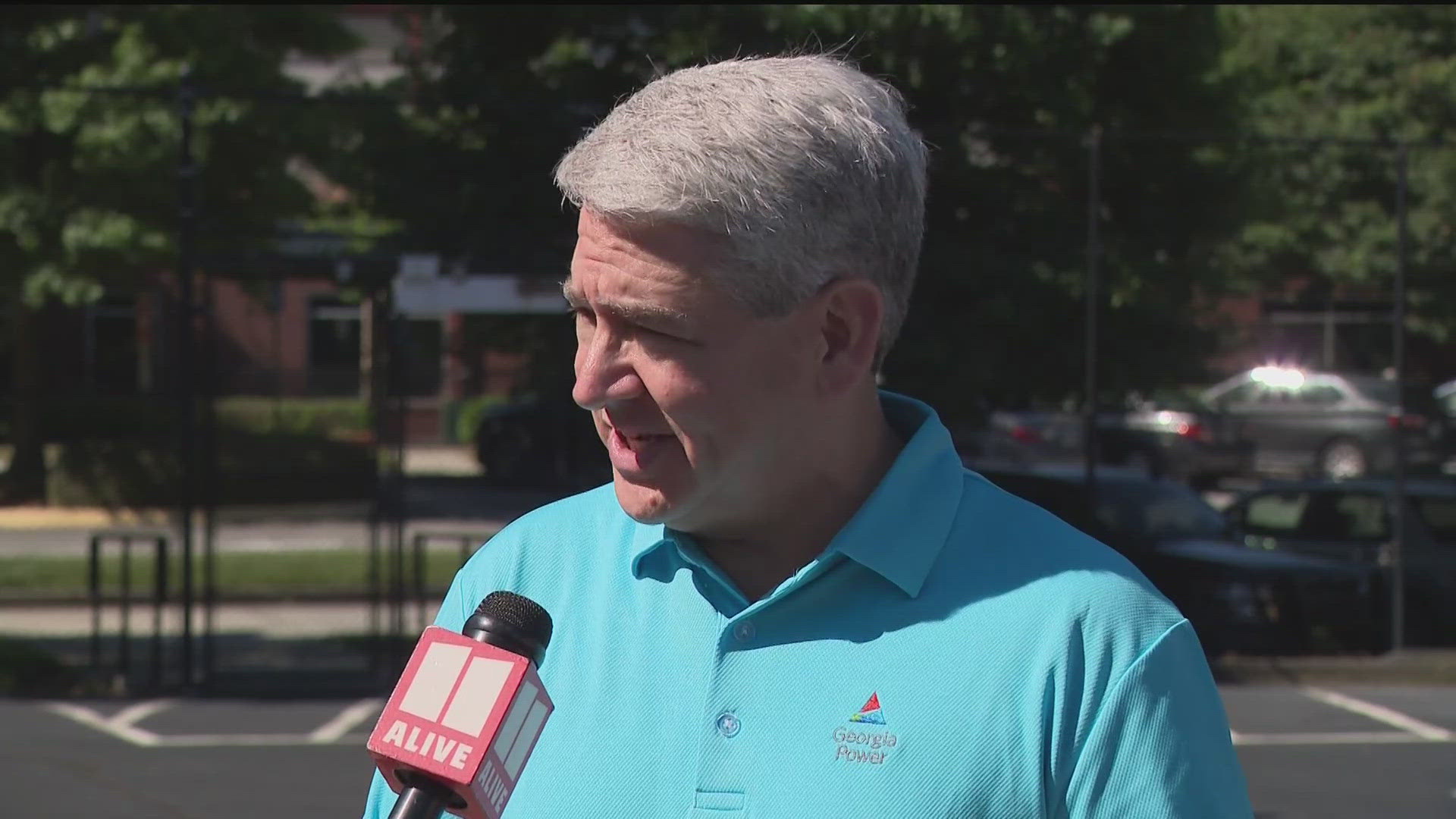ATLANTA — Although hurricane season is only beginning, it could be a busy summer and fall ahead. Last month, NOAA released its most aggressive pre-season Atlantic outlook on record.
And although we have yet to see a named storm, that time will come.
Georgia Power spent the week meeting with Emergency Managers and the National Weather Service at its Headquarters in Atlanta, strengthening communications between the groups to ensure a united front of public service.
While we know it will be a very active season, one strong storm on the right path can have a big impact on the Peach State.
This week, Georgia Power also showcased a mock hurricane staging area, an example of how they can mobilize thousands of workers and put resources in place across north Georgia to minimize the time you're without power.
John Kraft, Spokesperson for Georgia Power, says they monitor the forecast for potential tropical threats more than a week out as they begin to craft plans:
"As the forecast narrows, we start putting those plans into action," Kraft said.
Their initial plans are spearheaded from the Storm Center in Atlanta. But as they mobilize resources across the state, they a local basecamp at a mobile command center unit.
Crews go in and are prepared to stay for the long haul.
"The crews come prepared to work a week, sometimes 10 days. And hopefully, we're going to get the power restored more quickly than that," Kraft said.
Georgia Power provides mobile living quarters with bunk beds, showers, and a mobile kitchen to ensure their workers are well rested between very long work days.
In the aftermath of a storm, some of the power restoration processes can be done using their smart grid technology. With this, they can reroute power along other grid paths to shrink the overall number of customers without power. This works well when there are smaller summer thunderstorms. But during a hurricane, often the wind damage can be fairly widespread, so that's why they send in a vast amount of resources on the ground.
Instead of waiting for trees to be cleared from roadways before accessing remote downed power lines and wires, they can use drones or unmanned aerial vehicles to assess the situation from a bird's eye view.
Nick Howell is one of these Inspection Line Specialists who flies a drone for this purpose. He is one of a handful of full-time drone pilots, but several others are also certified to assist during larger events.
"We have about two dozen drone operators that we can strategically place around the state to help during a storm event," Howell said.
These drones can sometimes be mobilized quicker than a helicopter and can take detailed photos along the way. The photos are then used to itemize the resources needed to fix damaged power infrastructure before they can reach those places in person.
Another way technology can help speed up the process of getting residents' power on sooner.
Every year is different. Last year, Idalia brought strong winds from Valdosta over into southeast Georgia, and at its peak, around 150 thousand people in the state were without power. In a worst-case scenario, those numbers can be much higher. After Irma in 2017, around 1 million of Georgia Power’s 2.7 million customers were without power.
This strategy is used year-round, including during hurricanes, straight-line wind events, and even ice storms. Georgia Power says it is ready to tackle any challenge Mother Nature throws its way.

